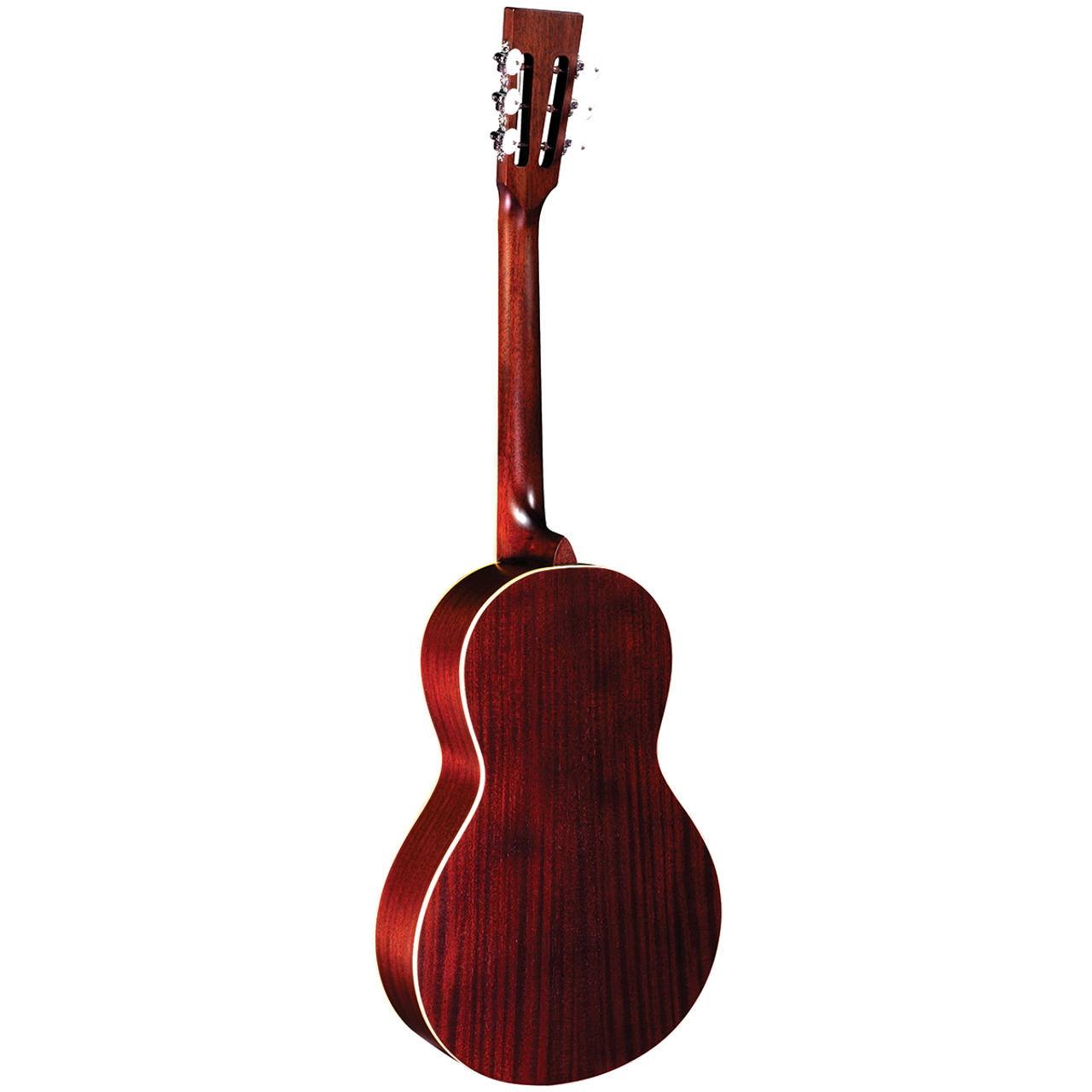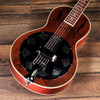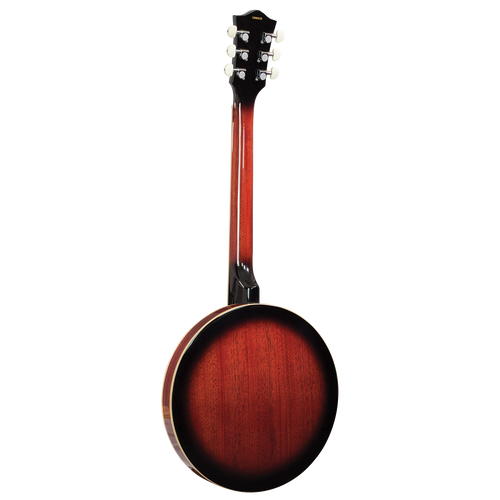Product Description
Barnes & Mullins BMR300 Resonator Guitar
The Barnes & Mullins BMR300 resonator guitar is the perfect instrument to begin or continue your foray into authentic blues and bluegrass guitar playing.
This classy parlour size resonator guitar features a beautiful satin spruce top matched with an open pore mahogany back and sides and a single cone, biscuit bridge resonator design with a chrome resonator cover and hardware. The top pairs two f-holes with three circular soundholes for a traditional and stylish aesthetic.
A mahogany Û÷round-neckÛª and walnut fingerboard meet a slotted headstock with open geared lyra machineheads, completing the BMR300Ûªs Û÷old-timeÛª look and feel.
Tonally, you can expect a naturally loud and articulate sound, and due to its shared resonator design characteristics with the banjo, the BMR300 delivers a distinctive banjo-esque mid / high range metallic assertiveness guaranteed to give your playing a truly authentic bluesy vibe. The combination of spruce and mahogany body tonewoods add a wonderful warmth, while the soundholes further ensure excellent volume and provide a well-rounded low-end.
Why should I buy a resonator guitar?
This Barnes & Mullins BMR300 resonator guitar is a great choice if youÛªre a guitarist who is venturing into blues and bluegrass styles, or equally, if youÛªre experienced in these areas of music and want a great-quality resonator guitar to add to your collection.
This versatile instrument can be tuned to various tunings suitable for blues, slide guitar, dobro and bluegrass styles, or simply to standard guitar tuning if youÛªre someone who wants to give your favourite riffs and licks that authentic blues and folk sound.
Common resonator guitar tunings
D, G, D, G, B, D - Open G
D, A, D, F#, A, D - Open D
E, A, D, G, B, E - Standard Guitar Tuning
G, B, D, G, B, D - Dobro Tuning
SPECIFICATIONS:
- Top: Spruce
- Back & Sides: Mahogany
- Neck: Mahogany
- Fingerboard: Walnut
- Frets: 18
- Nut Width: 43mm
- Scale Length: 25" / 650mm
- Bridge: Maple & Ebony - Biscuit Design
- Coverplate: Chrome
- Resonator Cone: Iron Alloy
- Handrest: Chrome
- Machine Heads: Lyra Open Gear
- Finish: Satin (Open Pore Back & Sides)
Please Note: Specifications are subject to change at any time.
Barnes & Mullins Origins
In 1894, Mr Albert Mullins and Mr S. Bowley Barnes started ÛÏThe JoÛ, their famous musical instrument journal.
Specialising in all things banjo, they soon began manufacturing their own banjos as well as importing many other instruments. The original Barnes and Mullins banjos are still sought after today, with collectors seeking them out all over the world.
Sadly in 1914 at the age of 40, Albert Mullins drowned when the Û÷Empress of IrelandÛª sank on the St Lawrence River. He was on the home leg of a 2 year sales trip.
Bowley Barnes continued the business thereafter, and what he had started with his partner years earlier in Bournemouth now moved to Rathbone Place, London.
In 1976, Mark Barnes ÛÒ son of Bowley Barnes ÛÒ moved the business to Grays Inn Road, Bloomsbury. Sadly in 1986, Mark Barnes died. He was greatly admired and respected by employees and customers alike who were quick to tell of his fair and generous nature.
In 1999, Bruce Perrin ÛÒ a Director since 1986 ÛÒ became Managing Director and moved the business from London to the current location ÛÒ Grays Inn House ÛÒ a modern 46000sqft warehouse and office facility in Oswestry, Shropshire.
Bruce Perrin says ÛÏWe are excited about the future and are constantly looking at ways to innovate and evolve, yet Barnes and Mullins has always endeavoured to put the customer at the top of its priority listÛ.































